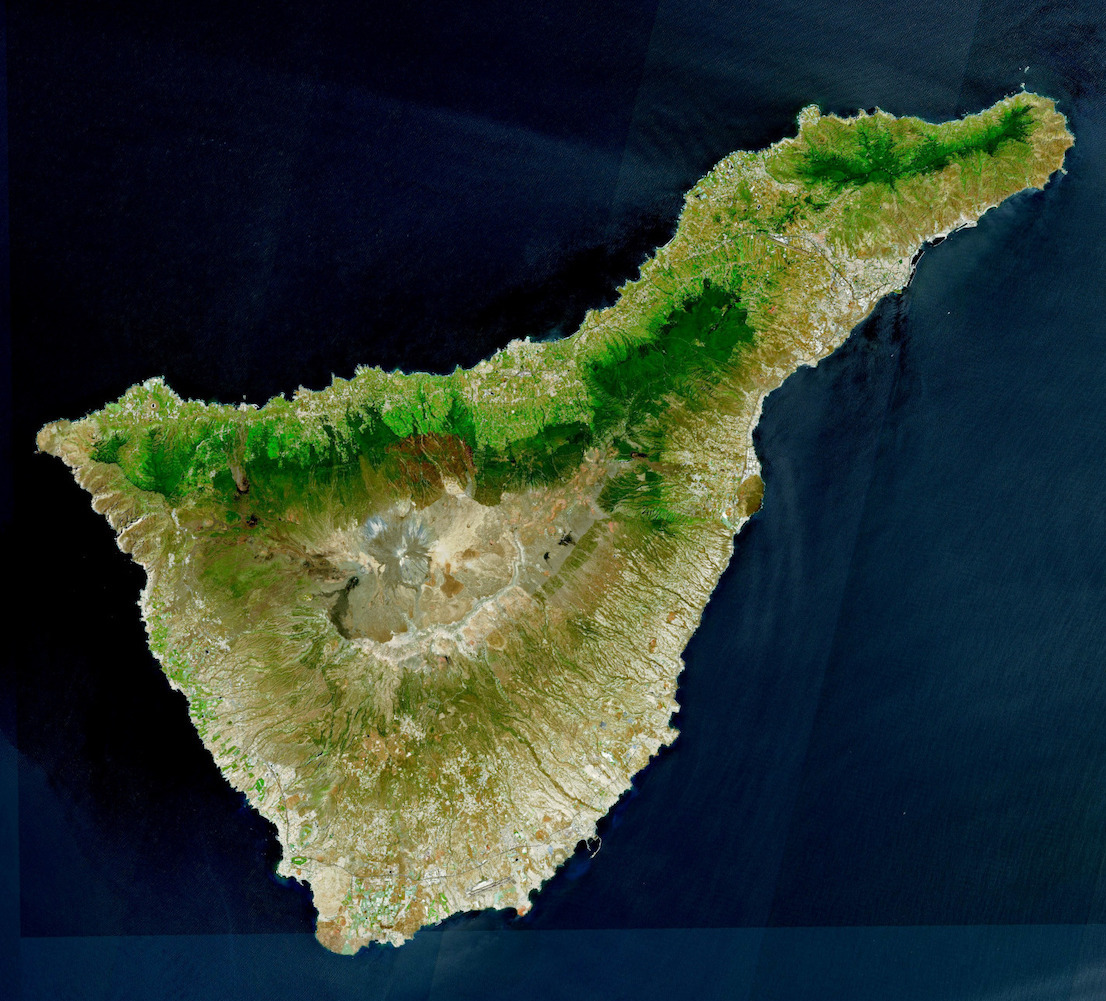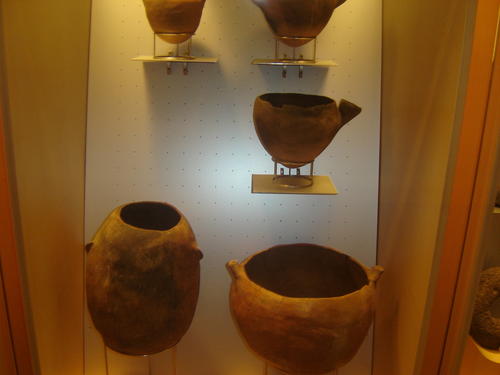|
Tinerfe
Tinerfe "the Great", legendary hero who was a guanche mencey (aboriginal king) of the island of Tenerife (Canary Islands, Spain). It is estimated that he lived at the end of the 14th century. He was the son of mencey Sunta, who ruled the island in the days before the conquest of the Canary Islands by Castile. Tinerfe the Great lived in Adeje (like all his predecessors), approximately a hundred years before the conquest of 1494. Upon Tinerfe's death, his sons divided the island into nine kingdoms. At the time of the conquest the kings of these kingdoms were: *Acaimo or Acaymo (mencey (''king'') of Menceyato de Tacoronte). *Adjona: (mencey (''king'') of Menceyato de Abona). * Añaterve: (mencey (''king'') of Menceyato de Güímar). *Bencomo: (mencey (''king'') of Menceyato de Taoro). * Beneharo: (mencey (''king'') of Menceyato de Anaga). * Pelicar: (mencey (''king'') of Menceyato de Icode). * Pelinor: (mencey (''king'') of Menceyato de Adeje). * Romen: (mencey (''king'') of ... [...More Info...] [...Related Items...] OR: [Wikipedia] [Google] [Baidu] |
Tenerife
Tenerife ( ; ; formerly spelled ''Teneriffe'') is the largest and most populous island of the Canary Islands, an Autonomous communities of Spain, autonomous community of Spain. With a land area of and a population of 965,575 inhabitants as of April 2025, it is the most populous island in Spain and the entire Macaronesia region. Tenerife is also home to 42.7% of the total population of the archipelago. More than seven million tourists (7,384,707 in 2024) visit Tenerife each year, making it by far the most visited island in the archipelago. It is one of the most important tourist destinations in Spain and the world, hosting one of the world's largest carnivals, the Carnival of Santa Cruz de Tenerife. The capital of the island, , is also the seat of the island council (). That city and are the co-capitals of the Autonomous communities of Spain, autonomous community of the Canary Islands. The two cities are both home to governmental institutions, such as the offices of the preside ... [...More Info...] [...Related Items...] OR: [Wikipedia] [Google] [Baidu] |
Menceyato De Adeje
Adeje was one of the 9 menceyatos (native Guanches, Guanche kingdoms) on the island of Tenerife (Canary Islands, Spain) before the arrival of the conquering Spaniards and occupied the present-day towns of Guía de Isora, Adeje, Santiago del Teide, as well as possibly also part of Arona, Tenerife, Arona, in the southwest of Tenerife. The kings of Adeje were Betzenuriya, Pelinor (mencey), Pelinor, Tinerfe and Sunta. (Trad.Spa :"''La conq ... [...More Info...] [...Related Items...] OR: [Wikipedia] [Google] [Baidu] |
Bencomo
Bencomo (; 1438 – 1495) was the penultimate ''mencey'' or king of Taoro, a Guanche ''menceyato'' on the island of Tenerife. He fought in the First Battle of Acentejo, a victory for the Guanches against the invading Castilians, after having refused the terms of Alonso Fernández de Lugo. He may have perished on the heights of San Roque during the Battle of Aguere alongside his brother Tinguaro. He had several children, including Adjona, Dácil, Bentor, Ruiman, Rosalva, Chachiñama, and Tiñate. Bentor succeeded him as mencey until his suicide in February 1495. Biography According to José de Viera y Clavijo, Bencomo was the son of Imobach, grandson of Betzenuhya, and great-grandson of Tinerfe the Great. He had a brother, Tinguaro, who fought alongside him during the Castilian conquest. He married Caseloria, and together they had three children: Bentor, Dácil (later baptized as Mencía Bencomo), and María Bencomo. His grandchildren included Ruymán, Rosalva, and Colla ... [...More Info...] [...Related Items...] OR: [Wikipedia] [Google] [Baidu] |
Acaimo
Acaimo or Acaymo was a Guanche '' mencey'' of Tacoronte, on the island of Tenerife at the time of the Spanish conquest in the 15th century. He formed an alliance against the Spaniards with the ''mencey'' Beneharo and the ''mencey'' Bencomo. Biography Family and Descendancy Acaimo descended from the first ''mencey'' of Tacoronte, who was called "Rumén" or "Romén" by Juan Núñez de la Peña. During the division of the island, which occurred after the death of his father, Tinerfe the Great, in the late fourteenth century, Acaimo took his father's territory. However, the scholar Juan Álvarez Delgado says that Aniaga is the parent of Acaimo, and Acaimo's full name is Acaimo ''Daniaga''. From Peña, Aniaga married a sister of Acaimo de Güímar, and because of this, she gave another name to her son. On the other hand, Viana also mentioned another son of the ''mencey'', whose name was Badenol, who died in the second Acentejo battle. She referred to Acaimo de Tacoronte ... [...More Info...] [...Related Items...] OR: [Wikipedia] [Google] [Baidu] |
Mencey
The Guanche were the Indigenous peoples, indigenous inhabitants of the Spain, Spanish Canary Islands, located in the Atlantic Ocean some to the west of modern Morocco and the North African coast. The islanders spoke the Guanche language, which is believed to have been related to the Berber languages of mainland North Africa; the language became extinct in the 17th century, soon after the islands were colonized. It is believed that the Guanche may have arrived at the archipelago some time in the 1st millennium BC, first millennium BC. The Guanche were the only indigenous people known to have lived in the Macaronesian archipelago region before the arrival of Europeans. There is no accepted evidence that the other Macaronesian archipelagos (the Cape Verde Islands, Madeira and the Azores) were inhabited. After the commencement of the Conquest of the Canary Islands, Spanish conquest of the Canaries, starting in the early 15th century, many natives were outright killed by the Spanish ... [...More Info...] [...Related Items...] OR: [Wikipedia] [Google] [Baidu] |
Menceyato De Güímar
The Guanche were the indigenous inhabitants of the Spanish Canary Islands, located in the Atlantic Ocean some to the west of modern Morocco and the North African coast. The islanders spoke the Guanche language, which is believed to have been related to the Berber languages of mainland North Africa; the language became extinct in the 17th century, soon after the islands were colonized. It is believed that the Guanche may have arrived at the archipelago some time in the first millennium BC. The Guanche were the only indigenous people known to have lived in the Macaronesian archipelago region before the arrival of Europeans. There is no accepted evidence that the other Macaronesian archipelagos (the Cape Verde Islands, Madeira and the Azores) were inhabited. After the commencement of the Spanish conquest of the Canaries, starting in the early 15th century, many natives were outright killed by the Spanish or died of exposure to new pathogens during the social disruption. Eventuall ... [...More Info...] [...Related Items...] OR: [Wikipedia] [Google] [Baidu] |
Menceyato De Icode
Icod or Icode was one of nine menceyatos (native Guanche kingdoms) that had divided the island of Tenerife (Canary Islands, Spain) after the death of mencey Tinerfe. It occupied a part of the existing municipalities of El Tanque, La Guancha, Icod de los Vinos Icod de los Vinos is a municipality in the province of Santa Cruz de Tenerife on the island of Tenerife, in the Canary Islands (Spain), located in the northwestern part of the island. Inhabitants of Icod are known in Spanish as ''"icodenses"''. ... as well as part of Garachico. Its last mencey was Pelicar. [...More Info...] [...Related Items...] OR: [Wikipedia] [Google] [Baidu] |
Menceyato De Abona
Abona was one of nine menceyatos (native Guanches, Guanche kingdoms) that has divided the island of Tenerife after the death of mencey Tinerfe, in the days before the conquest of the islands by the Crown of Castile. It extended over the municipalities Fasnia, Arico, Granadilla de Abona, San Miguel de Abona, Vilaflor as well as part of Arona, Tenerife, Arona. Its menceys were Atguaxoña and Adxoña (or Adjona). (Trad.Spa :"''La conquista ... [...More Info...] [...Related Items...] OR: [Wikipedia] [Google] [Baidu] |
Menceyato De Daute
Daute was one of nine menceyatos (native Guanche kingdoms) on the island of Tenerife (Canary Islands, Spain) after the death of King Tinerfe, in the period before the conquest of the island by the Crown of Castile The Crown of Castile was a medieval polity in the Iberian Peninsula that formed in 1230 as a result of the third and definitive union of the crowns and, some decades later, the parliaments of the kingdoms of Kingdom of Castile, Castile and Kingd .... It controlled the present-day municipalities of El Tanque, Los Silos, Buenavista del Norte and Santiago del Teide. Its menceys were Cocanaymo and Romen. [...More Info...] [...Related Items...] OR: [Wikipedia] [Google] [Baidu] |
Romen (mencey)
Romen was a Guanche mencey king of Menceyato de Daute in times of the conquest of Tenerife in the fifteenth century. Romen is remembered as one of the Guanche leaders who resisted the Spanish conquest of Tenerife. Reign Upon arrival of Alonso Fernández de Lugo in 1494, Romen allied with Bencomo mencey against the Spanish invasion, and its menceyato one side of war. However, some historians based in Viana, refer to ally with Bencomo refused for not wanting to submit to the king of Taoro dirigiese the rest in the race. For its part, he indicates that Viera y Clavijo, Romen would not ally with Bencomo believing their domains of the danger of distant conquerors. Finally, after successive defeats and ordered major Guanche Kings (Bencomo, Tinguaro and Bentor), Romen gave his territory in the spring of 1496 in the act known as Paz de Los Realejos. After the surrender, Romen was brought to court to be presented to the Catholic Monarchs. His end is unknown, although having belonged to ... [...More Info...] [...Related Items...] OR: [Wikipedia] [Google] [Baidu] |


